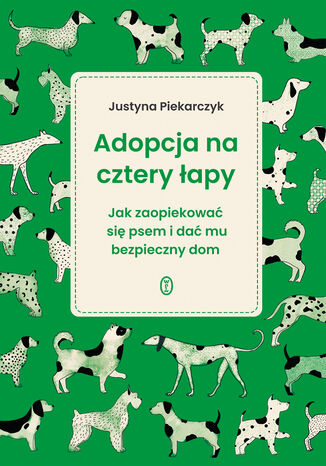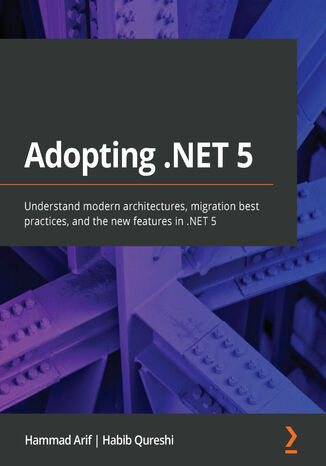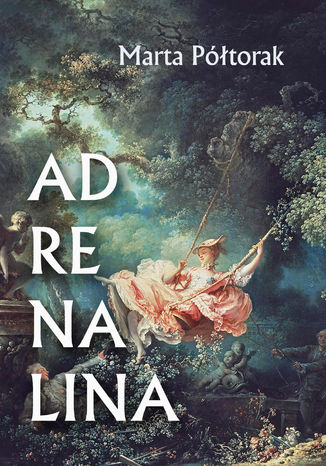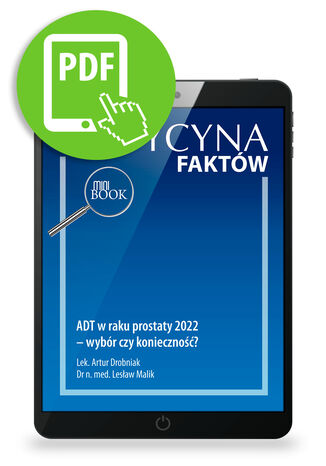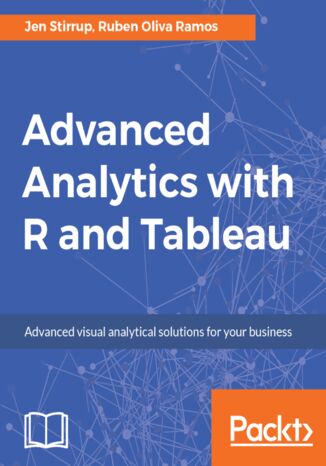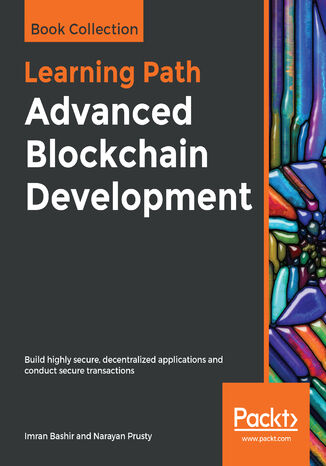Категорії
-
- Біткойн
- Ділова жінка
- Коучинг
- Контроль
- Електронний бізнес
- Економіка
- Фінанси
- Фондова біржа та інвестиції
- Особисті компетенції
- Комп'ютер в офісі
- Комунікація та переговори
- Малий бізнес
- Маркетинг
- Мотивація
- Мультимедійне навчання
- Нерухомість
- Переконання та НЛП
- Податки
- Соціальна політика
- Порадники
- Презентації
- Лідерство
- Зв'язки з громадськістю
- Звіти, аналізи
- Секрет
- Соціальні засоби комунікації
- Продаж
- Стартап
- Ваша кар'єра
- Управління
- Управління проектами
- Людські ресурси (HR)
-
- Architektura i wnętrza
- Безпека життєдіяльності
- Biznes i Ekonomia
- Будинок та сад
- Електронний бізнес
- Ekonomia i finanse
- Езотерика
- Фінанси
- Особисті фінанси
- Бізнес
- Фотографія
- Інформатика
- Відділ кадрів та оплата праці
- Для жінок
- Комп'ютери, Excel
- Бухгалтерія
- Культура та література
- Наукові та академічні
- Охорона навколишнього середовища
- Впливові
- Освіта
- Податки
- Подорожі
- Психологія
- Релігія
- Сільське господарство
- Ринок книг і преси
- Транспорт та спедиція
- Здоров'я та краса
-
- Офісні застосунки
- Бази даних
- Біоінформатика
- Бізнес ІТ
- CAD/CAM
- Digital Lifestyle
- DTP
- Електроніка
- Цифрова фотографія
- Комп'ютерна графіка
- Ігри
- Хакування
- Hardware
- IT w ekonomii
- Наукові пакети
- Шкільні підручники
- Основи комп'ютера
- Програмування
- Мобільне програмування
- Інтернет-сервери
- Комп'ютерні мережі
- Стартап
- Операційні системи
- Штучний інтелект
- Технологія для дітей
- Вебмайстерність
-
- Антології
- Балада
- Біографії та автобіографії
- Для дорослих
- Драми
- Журнали, щоденники, листи
- Епос, епопея
- Нарис
- Наукова фантастика та фантастика
- Фельєтони
- Художня література
- Гумор, сатира
- Інше
- Класичний
- Кримінальний роман
- Нехудожня література
- Художня література
- Mity i legendy
- Лауреати Нобелівської премії
- Новели
- Побутовий роман
- Okultyzm i magia
- Оповідання
- Спогади
- Подорожі
- Оповідна поезія
- Поезія
- Політика
- Науково-популярна
- Роман
- Історичний роман
- Проза
- Пригодницька
- Журналістика
- Роман-репортаж
- Romans i literatura obyczajowa
- Сенсація
- Трилер, жах
- Інтерв'ю та спогади
-
- Археологія
- Bibliotekoznawstwo
- Кінознавство / Теорія кіно
- Філологія
- Польська філологія
- Філософія
- Finanse i bankowość
- Географія
- Економіка
- Торгівля. Світова економіка
- Історія та археологія
- Історія мистецтва і архітектури
- Культурологія
- Мовознавство
- літературні студії
- Логістика
- Математика
- Ліки
- Гуманітарні науки
- Педагогіка
- Навчальні засоби
- Науково-популярна
- Інше
- Психологія
- Соціологія
- Театральні студії
- Богослов’я
- Економічні теорії та науки
- Transport i spedycja
- Фізичне виховання
- Zarządzanie i marketing
-
- Безпека життєдіяльності
- Історія
- Дорожній кодекс. Водійські права
- Юридичні науки
- Охорона здоров'я
- Загальне, компендіум
- Академічні підручники
- Інше
- Закон про будівництво і житло
- Цивільне право
- Фінансове право
- Господарське право
- Господарське та комерційне право
- Кримінальний закон
- Кримінальне право. Кримінальні злочини. Кримінологія
- Міжнародне право
- Міжнародне та іноземне право
- Закон про охорону здоров'я
- Закон про освіту
- Податкове право
- Трудове право та законодавство про соціальне забезпечення
- Громадське, конституційне та адміністративне право
- Кодекс про шлюб і сім'ю
- Аграрне право
- Соціальне право, трудове право
- Законодавство Євросоюзу
- Промисловість
- Сільське господарство та захист навколишнього середовища
- Словники та енциклопедії
- Державні закупівлі
- Управління
-
- Африка
- Альбоми
- Південна Америка
- Центральна та Північна Америка
- Австралія, Нова Зеландія, Океанія
- Австрія
- Азії
- Балкани
- Близький Схід
- Болгарія
- Китай
- Хорватія
- Чеська Республіка
- Данія
- Єгипет
- Естонія
- Європа
- Франція
- Гори
- Греція
- Іспанія
- Нідерланди
- Ісландія
- Литва
- Латвія
- Mapy, Plany miast, Atlasy
- Мініпутівники
- Німеччина
- Норвегія
- Активні подорожі
- Польща
- Португалія
- Інше
- Przewodniki po hotelach i restauracjach
- Росія
- Румунія
- Словаччина
- Словенія
- Швейцарія
- Швеція
- Світ
- Туреччина
- Україна
- Угорщина
- Велика Британія
- Італія
-
- Філософія життя
- Kompetencje psychospołeczne
- Міжособистісне спілкування
- Mindfulness
- Загальне
- Переконання та НЛП
- Академічна психологія
- Психологія душі та розуму
- Психологія праці
- Relacje i związki
- Батьківство та дитяча психологія
- Вирішення проблем
- Інтелектуальний розвиток
- Секрет
- Сексуальність
- Спокушання
- Зовнішній вигляд та імідж
- Філософія життя
-
- Біткойн
- Ділова жінка
- Коучинг
- Контроль
- Електронний бізнес
- Економіка
- Фінанси
- Фондова біржа та інвестиції
- Особисті компетенції
- Комунікація та переговори
- Малий бізнес
- Маркетинг
- Мотивація
- Нерухомість
- Переконання та НЛП
- Податки
- Соціальна політика
- Порадники
- Презентації
- Лідерство
- Зв'язки з громадськістю
- Секрет
- Соціальні засоби комунікації
- Продаж
- Стартап
- Ваша кар'єра
- Управління
- Управління проектами
- Людські ресурси (HR)
-
- Антології
- Балада
- Біографії та автобіографії
- Для дорослих
- Драми
- Журнали, щоденники, листи
- Епос, епопея
- Нарис
- Наукова фантастика та фантастика
- Фельєтони
- Художня література
- Гумор, сатира
- Інше
- Класичний
- Кримінальний роман
- Нехудожня література
- Художня література
- Mity i legendy
- Лауреати Нобелівської премії
- Новели
- Побутовий роман
- Okultyzm i magia
- Оповідання
- Спогади
- Подорожі
- Поезія
- Політика
- Науково-популярна
- Роман
- Історичний роман
- Проза
- Пригодницька
- Журналістика
- Роман-репортаж
- Romans i literatura obyczajowa
- Сенсація
- Трилер, жах
- Інтерв'ю та спогади
-
- Філософія життя
- Міжособистісне спілкування
- Mindfulness
- Загальне
- Переконання та НЛП
- Академічна психологія
- Психологія душі та розуму
- Психологія праці
- Relacje i związki
- Батьківство та дитяча психологія
- Вирішення проблем
- Інтелектуальний розвиток
- Секрет
- Сексуальність
- Спокушання
- Зовнішній вигляд та імідж
- Філософія життя
Książka w dwóch wersjach językowych: polskiej i angielskiej. A dual Polish-English language edition. Adonais utwór angielskiego poety romantycznego Percy'ego Bysshe Shelleya, będący elegią na cześć młodo zmarłego Johna Keatsa, opublikowany w 1821. Poemat jest napisany strofą spenserowską, czyli zwrotką dziewięciowersową rymowaną ababbcbcc. Składa się z pięćdziesięciu pięciu takich strof. Na język polski utwór przełożył Jan Kasprowicz. A oto fragment z przedmowy: John Keats umarł w Rzymie, na suchoty, w dwudziestym czwartym roku życia, dnia 27 grudnia 1820 i pochowany został na romantycznym i samotnym cmentarzu protestantów tego miasta, u stóp piramidy, będącej grobem Cestiusza, w pobliżu murów i baszt, obecnie rozpadłych, a które ongi okalały Rzym starożytny. Cmentarz jest wśród otoczenia ruin miejscem otwartym, w zimie pokrytym fiołkami i stokrotkami. Można by się nieomal zakochać w Śmierci na myśl, że zwłoki nasze na tak uroczym spoczną miejscu. Duch opłakiwanej istoty, której pamięci te niegodne poświęciłem wiersze, był niemniej delikatnym i wiotkim, jak pięknym; gdzie zaś istnieje obfitość robactwa, cóż dziwnego, że robak kwiecie młode podgryzł jeszcze w zawiązku? Surowa krytyka jego Endymiona, wydrukowana w Quarterly Rewiew, wpłynęła w sposób najgwałtowniejszy na jego umysł wrażliwy, a spowodowane przez nią wstrząśnienie skończyło się tym, że pękło mu w płucach jedno z naczyń krwionośnych; szybko wywiązały się suchoty, a późniejsze ze strony krytyków sprawiedliwszych uznanie prawdziwej wielkości sił jego ducha nie zdołało uleczyć już blizny, tak lekkomyślnie zadanej. Można by słusznie powiedzieć, że nieszczęśliwi ci ludzie nie wiedzą, co czynią. Rozsiewają obelgi i plotki, nie zważając wcale, azali grot zatruty nie ugodzi w serce, stwardniałe od mnogości otrzymanych razów, albo, jak u Keatsa, z przenikliwszej stworzone materii.
Adopcja na cztery łapy. Jak zaopiekować się psem i dać mu bezpieczny dom
Know-hau po psim świecie! Praktyczny poradnik o adopcji autorki popularnego fanpagea Nie kupuj Adoptuj Decyzja o przygarnięciu do swojego domu zwierzęcia wpływa na życie całej rodziny i otoczenia. Im lepiej przyszły opiekun będzie wiedział, czego może spodziewać się po adopcji psa, tym większa szansa na zbudowanie dobrej, opartej na zaufaniu relacji. Z czym wiąże się adopcja szczeniaka, a z czym dorosłego psa? Czy wielkość mieszkania ma dla czworonoga znaczenie? Jakie formalności spełnić przed adopcją i jak skompletować wyprawkę? W jaki sposób wprowadzać psa do domu, w którym mieszka już kot? Jak rozpoznać zachowania lękowe u zwierzęcia i jak na nie reagować? Justyna Piekarczyk mająca za sobą organizację kilkuset udanych adopcji krok po kroku wyjaśnia, jak wygląda ten proces. Z praktycznego poradnika dowiesz się, jak rozumieć potrzeby swojego zwierzęcia, zadbać o jego zdrowie i zapewnić najlepsze warunki do życia. Poznasz także najpowszechniejsze mity związane z adopcją. Książka zawiera szereg przydatnych wskazówek nie tylko dla osób rozważających adopcję zwierzęcia, ale także dla opiekunów psów, którzy chcą lepiej rozumieć zachowania swoich czworonożnych przyjaciół i poprawić z nimi relacje.
.NET 5 is the unification of all .NET technologies in a single framework that can run on all platforms and provide a consistent experience to developers, regardless of the device, operating system (OS), or cloud platform they choose.By updating to .NET 5, you can build software that can quickly adapt to the rapidly changing demands of modern consumers and stay up to date on the latest technology trends in .NET.This book provides a comprehensive overview of all the technologies that will form the future landscape of .NET using practical examples based on real-world scenarios, along with best practices to help you migrate from legacy platforms.You’ll start by learning about Microsoft’s vision and rationale for the unification of the platforms. Then, you’ll cover all the new language enhancements in C# 9. As you advance, you’ll find out how you can align yourself with modern technology trends, focusing on everything from microservices to orchestrated containerized deployments. Finally, you’ll learn how to effectively integrate machine learning in .NET code.By the end of this .NET book, you’ll have gained a thorough understanding of the .NET 5 platform, together with a readiness to adapt to future .NET release cycles, and you’ll be able to make architectural decisions about porting legacy systems and code bases to a newer platform.
Namalowany przez francuskiego mistrza Jean’a-Honoré Fragonarda obraz „Huśtawka” to od ponad 250 lat znany symbol nie tylko rokoka, ale także popkultury. Choć na obrazie trwa szalona sielanka lat francuskiej monarchii absolutnej, to czuć już niewidzialną grozę, coś, co nie daje nam — ludziom obeznanym już z dalszą historią — spokoju. Jednak ten, frywolny obraz zawsze będzie kojarzony z zabawami parkowymi, znudzonej i bogatej arystokracji, która zabija czas plotkami, seksem i imprezą na całego. Dwór Ludwika XV pełen był takich uciech, pompy, dekoracyjności, braku kontroli i... królewskiej władzy nad tymi wszystkim odcieniami kiczu i erotyki. Obraz „Huśtawka” jest dziełem na temat miłości i pożądania, o czym świadczy wiele symboli jak, chociażby wirujący pantofelek, zaglądający pod spódniczkę mężczyźni czy putta pełne erotycznych aluzji. Dzieło Fragonarda pełne jest adrenaliny. Jednak jak wspomniałam na początku, czas krwawych rewolucji jest już za progiem, daje się odczuć jako dni pełne kontrastowej dla wesołej zabawy trwogi, która wyzwala adrenalinę. Hormon ten towarzyszy nam wiernie — na dobre i na złe. Bohaterka obrazu jest wesoła, ale też udaje, że te zaloty są dla niej miłe... Może po prostu nie wypada jej odmówić? A może nie wie, jak to powinno się zrobić? Czy wie, że towarzysze mają swoje zamiary? A może nie wypada jej protestować? Tomik „Adrenalina” jest odpowiedzią (lub jej próbą) na pytanie o samoidentyfikację, zrozumienie i zaakceptowanie lub zane-gowanie dla elementów, które mogą spotkać się ze sobą na metapoziomie rozumienia aspektów kobiecości. Aby najlepiej zrozumieć swoje ograniczenia, także te wynikające ze stereotypów, przeciwstawić się im można poprzez kamuflaż. Konwencje, które z jednej strony mogą nas wzmocnić, ale przeważnie nawet pod płaszczykiem wygody często powodują wpisanie kobiety w przekaz zwyczajowy. Co często nie pozwala, by spojrzeć na siebie autentycznie. Rola kobiety w polskim społeczeństwie to także forma kamuflażu. Musi ona nieustannie wplatać w swoje życie elementy zupełnie niepasujące do niej, ale wymagane. Musi rozwiązywać różnego rodzaju życiowe i mentalne rebusy oraz kontrolować czy jest to dostatecznie dobre dla innych. Poczucie bezradności i złości jest efektem skomplikowanej natury kobiecości przypisywanej codziennie do różnorakich frazesów. Zestawienie wierszy to połączenie pewnych scen, przedstawień czy nawet alegorii, które nie do końca są dopasowane w warstwie wstępnej percepcji. Jednak ich wspólne postrzeganie w ujęciu niepasujących ele-mentów to sztuka słowa pokazana poprzez połączenie obrazów, które w dowolny sposób można wykorzystać. Ja nadaję im charakteru współpracy, gdzie razem tworzą narrację metaforyczną, może nawet narrację poprzez zlepek metafor, które są skojarzeniami, stereotypowymi odbiorami, czy arche-typicznym artefaktem. Podobnie jak na obrazie „Huśtawka” śliczny obrazek to tylko oczekiwanie na koniec, bo przecież i obecnie te, tradycyjne kody, kurtuazja, różnorakie sytuacje, które nie mają jednoznacznych konotacji, ale zawsze pozostają głęboko, dają nie tyle do myślenia co do przemyśleń, których kierunek nie jest znany. Bo czy wiemy kim jesteśmy, gdy dookoła tyle fałszu i strachu? Czy możemy się zbuntować, zmierzyć z innym postrzeganiem i jednocześnie być akceptowane? A może to jest bunt bez sensu, który tylko pali mosty? Czego zatem potrzeba nam dziś bardziej —dam, czy rewolucji?
Ciche PRL-owskie miasteczko, nieśmiali mieszkańcy i zbrodnia doskonała... W cichym Lipowie, młody mężczyzna odkrywa, że śmierć jego bliskich jest połączona z historią lokalnej fabryki. Im bardziej próbuje rozgryźć te powiązania, tym bardziej czuje się zagrożony. Czy odważy się stawić czoła prawdzie, której strzegą cienie przeszłości i...lokalna piękność? Śledztwo zostaje przydzielone doświadczonemu kapitanowi Chmurze. Czy zmowa milczenia mieszkańców może okazać się tak silna, że prawdę odkryje zbyt późno? Znajdziecie tu nie tylko zagadki kryminalne, ale i wiernie odmalowaną rzeczywistość Polski w czasach PRL. Lubicie kryminały Leopolda Tyrmanda? Jeśli tak, to pozycja dla Was! PRL kryminalnie PRL kryminalnie - seria składająca się z powieści milicyjnych najbardziej poczytnych autorek i autorów czasów PRL. Barbara Gordon - właść. Larysa Zajączkowska-Mitznerowa, polska pisarka kryminałów PRL urodzona w Kijowie. Pisała również pod innymi pseudonimami, jest autorką około 24 książek, w tym powieści takich jak "Adresat nieznany" i "Błąd porucznika Kwaśniaka".
ADT w raku prostaty 2022 - wybór czy konieczność?
Rak prostaty jest coraz częściej występującym nowotworem złośliwym. Terapia opiera się na postępowaniu miejscowym (chirurgia, radioterapia) i leczeniu systemowym (hormonoterapia, chemioterapia). Deprywacja androgenowa odgrywa kluczową rolę w leczeniu raka stercza. Różne kombinacje leków pozwalają na coraz dłuższy czas życia pacjentów. W artykule przedstawiono wybrane zagadnienia związane z nowymi możliwościami leczenia w różnych stadiach choroby.
Ruben Oliva Ramos, Jen Stirrup, Roberto Rösler
Tableau and R offer accessible analytics by allowing a combination of easy-to-use data visualization along with industry-standard, robust statistical computation.Moving from data visualization into deeper, more advanced analytics? This book will intensify data skills for data viz-savvy users who want to move into analytics and data science in order to enhance their businesses by harnessing the analytical power of R and the stunning visualization capabilities of Tableau. Readers will come across a wide range of machine learning algorithms and learn how descriptive, prescriptive, predictive, and visually appealing analytical solutions can be designed with R and Tableau. In order to maximize learning, hands-on examples will ease the transition from being a data-savvy user to a data analyst using sound statistical tools to perform advanced analytics.By the end of this book, you will get to grips with advanced calculations in R and Tableau for analytics and prediction with the help of use cases and hands-on examples.
Blockchain technology is a distributed ledger with applications in industries such as finance, government, and media. This Learning Path is your guide to building blockchain networks using Ethereum, JavaScript, and Solidity. You will get started by understanding the technical foundations of blockchain technology, including distributed systems, cryptography and how this digital ledger keeps data secure. Further into the chapters, you’ll gain insights into developing applications using Ethereum and Hyperledger. As you build on your knowledge of Ether security, mining, smart contracts, and Solidity, you’ll learn how to create robust and secure applications that run exactly as programmed without being affected by fraud, censorship, or third-party interference. Toward the concluding chapters, you’ll explore how blockchain solutions can be implemented in applications such as IoT apps, in addition to its use in currencies. This Learning Path also highlights how you can increase blockchain scalability, and discusses the future scope of this fascinating and powerful technology. By the end of this Learning Path, you'll be equipped with the skills you need to tackle pain points encountered in the blockchain life cycle and confidently design and deploy decentralized applications.


